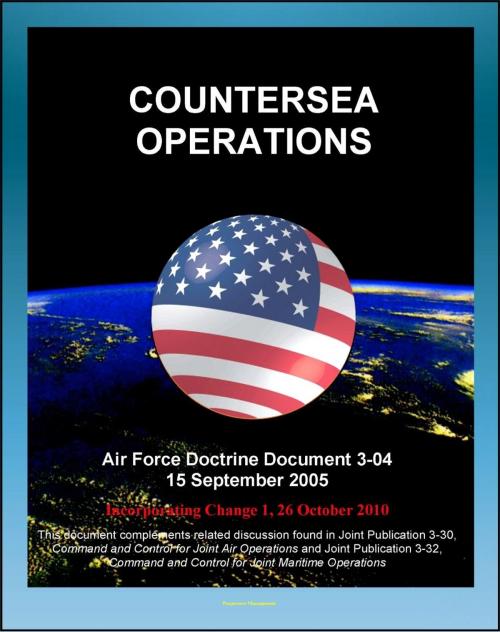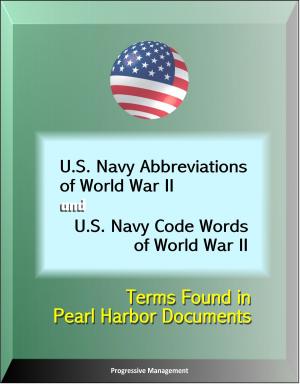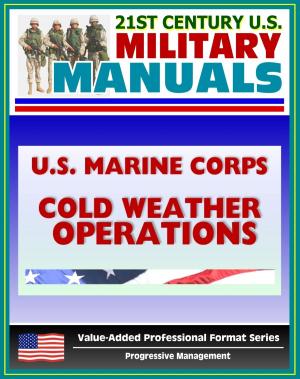Air Force Doctrine Document 3-04, Countersea Operations - Maritime Domain, Naval Warfare, Maritime Air Support (MAS), Antisubmarine Warfare, Air-to-Air Refueling
Nonfiction, Science & Nature, Technology, Aeronautics & Astronautics, History, Military, Aviation| Author: | Progressive Management | ISBN: | 9781476060439 |
| Publisher: | Progressive Management | Publication: | April 12, 2012 |
| Imprint: | Smashwords Edition | Language: | English |
| Author: | Progressive Management |
| ISBN: | 9781476060439 |
| Publisher: | Progressive Management |
| Publication: | April 12, 2012 |
| Imprint: | Smashwords Edition |
| Language: | English |
Countersea Operations are the use of Air Force capabilities in the maritime environment to accomplish the joint force commander's objectives. This doctrine supports DOD Directive 5100.01, Functions of the Department of Defense and Its Major Components, requirements for surface sea surveillance, anti-air warfare, anti-surface ship warfare, and anti-submarine warfare. Air Force countersea operations are conducted in the maritime environment through counterair; strategic attack; air interdiction; close air support; and intelligence, surveillance, and reconnaissance operations. Air Force forces also provide vital air mobility support to maritime forces through air refueling.
The objective of countersea operations is to gain and maintain control of the maritime environment in order to achieve maritime superiority. Air Force forces, with their speed, range, and flexibility, offer the joint force commander the unique ability to exploit the air and space dimensions. Air Force forces are inherently capable whether achieving effects in the air, on land, or on the sea. Air, space, and information forces of the Air Force, working in concert with naval forces, make a significant contribution to US dominance of the maritime environment.
Countersea operations are those operations conducted to attain and maintain a desired degree of maritime superiority by the destruction, disruption, delay, diversion, or other neutralization of threats in the maritime domain. The main objective of countersea operations is to secure and dominate the maritime domain and prevent opponents from doing the same.
The countersea function entails Air Force operations in the maritime domain to achieve, or aid in the achievement of, superiority in that medium. This function fulfills Department of Defense (DOD) requirements for the use of Air Force forces to counter adversary air, surface, and subsurface threats, ensuring the security of vital sea and coastal areas, and enhancing the maritime scheme of maneuver. More importantly, it demonstrates the teamwork required of Service forces working together in a joint environment. Air Force forces achieve effects in the maritime domain through the integrated employment of air, space, and cyberspace capabilities.
Contents: Chapter One - Fundamentals of Countersea Operations * Chapter Two - Organization, Command, and Control * Chapter Three - Countersea Planning and Employment * Chapter Four - Countersea Training
Countersea Operations are the use of Air Force capabilities in the maritime environment to accomplish the joint force commander's objectives. This doctrine supports DOD Directive 5100.01, Functions of the Department of Defense and Its Major Components, requirements for surface sea surveillance, anti-air warfare, anti-surface ship warfare, and anti-submarine warfare. Air Force countersea operations are conducted in the maritime environment through counterair; strategic attack; air interdiction; close air support; and intelligence, surveillance, and reconnaissance operations. Air Force forces also provide vital air mobility support to maritime forces through air refueling.
The objective of countersea operations is to gain and maintain control of the maritime environment in order to achieve maritime superiority. Air Force forces, with their speed, range, and flexibility, offer the joint force commander the unique ability to exploit the air and space dimensions. Air Force forces are inherently capable whether achieving effects in the air, on land, or on the sea. Air, space, and information forces of the Air Force, working in concert with naval forces, make a significant contribution to US dominance of the maritime environment.
Countersea operations are those operations conducted to attain and maintain a desired degree of maritime superiority by the destruction, disruption, delay, diversion, or other neutralization of threats in the maritime domain. The main objective of countersea operations is to secure and dominate the maritime domain and prevent opponents from doing the same.
The countersea function entails Air Force operations in the maritime domain to achieve, or aid in the achievement of, superiority in that medium. This function fulfills Department of Defense (DOD) requirements for the use of Air Force forces to counter adversary air, surface, and subsurface threats, ensuring the security of vital sea and coastal areas, and enhancing the maritime scheme of maneuver. More importantly, it demonstrates the teamwork required of Service forces working together in a joint environment. Air Force forces achieve effects in the maritime domain through the integrated employment of air, space, and cyberspace capabilities.
Contents: Chapter One - Fundamentals of Countersea Operations * Chapter Two - Organization, Command, and Control * Chapter Three - Countersea Planning and Employment * Chapter Four - Countersea Training















